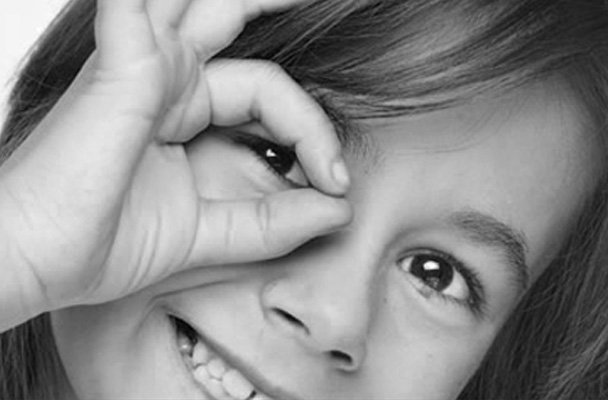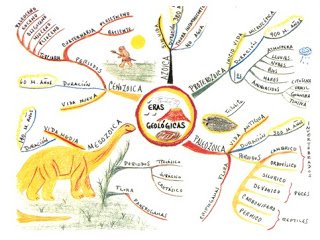Learning style
Learning styles are defined as the different ways in which an individual can learn.
According to Keefe (1988) "learning styles are the cognitive, affective and physiological traits that serve as relatively stable indicators of how students perceive, interact and respond to their learning environments" Kolb (1984) includes the concept of learning styles. learning within its model of learning by experience and describes it as "some capacities to learn, which stand out above others, as a result of the hereditary apparatus of one's own life experiences, and of the demands of the current environment".

How to identify learning styles in children?
If you know the learning style of your children or the children in your class you can help them learn and study better. There are parents who have not yet done any small tests or tests on their children. Well here we will try to help you discover it.
People have different ways of interpreting and communicating with the outside world based on our knowledge, experiences, genetic code and talent. These different forms or channels of communication to represent mental models or information from the outside world:
Visual
Auditory
Kinesthetic or kinesthetic...

Image

Everyone has a learning style. People fall into one of three categories: kinesthetic, auditory or visual. It is not uncommon for people to change styles when necessary, or for some people to have a secondary learning style or a combination of two styles, but we all have one. The University of Illinois Extension states that "In order to work efficiently with your child, it is important to understand your own learning style." Understanding learning styles can help you teach your child at home or help with homework or problems at school.
Kinesthetic learning

Kinesthetic children are those who learn best by doing things. They are in tune with their feelings and the movement helps them learn. They like to figure out how things work, take things apart and put them together again. These children are often nervous and are sometimes described as hyperactive. They may enjoy working with artistic issues or fixing things. Fifty percent of high school students fall into the kinesthetic category.
Auditory learning

The hearing children learn by listening. These children remember better if they are taught things in poems or songs. They retain the information they hear from a class and often have excellent oral skills, but they can be poor readers because of their weakness in visual skills. Children who have an auditory learning style can be good at music and to learn foreign languages.
Visual learning

Visual children learn better by observing. They tend to build images in their mind of how something will look. Usually, the visual people are neat and clean. These children learn best with diagrams, pictures and even just writing on the board. Children who are visual learners tend to be good at math and to notice body language and facial expressions.
Apply learning styles

Only 35 percent of children are better listeners, but 80 percent of instructions are provided by this means. "Obviously, changing the preferred method of teaching the auditory to a mix of all styles would help all children to learn and retain information At home, your children may not have the same learning style, but you can try to incorporate something of each style into what you are teaching.

AUDITORY:
It is a teaching method that is aimed at students whose learning style is oriented more towards the assimilation of information through the ear and not through sight. While the vast majority of people tend to be primarily visual in the way they relate to the world around them, audio stimulation is often used as a secondary means of finding and absorbing knowledge. For a small percentage of people, auditory learning exceeds visual stimuli and serves as the primary learning method, with visual learning becoming secondary.

VISUAL
Visual Learning is defined as a teaching / learning method that uses a set of Graphic Organizers (visual methods to organize information), in order to help students, by working with ideas and concepts, to think and learn more effectively . In addition, these allow to identify erroneous ideas and to visualize patterns and interrelations in the information, necessary factors for the understanding and deep internalization of concepts. Examples of these Organizers are: Concept maps, Cause-Effect diagrams and Timelines, among others.
The Graphic Organizers take different physical forms and each of them is appropriate to represent a particular type of information. Below we describe some of the most commonly used graphic organizers (OG) in educational processes:
· Visual classifiers
· Conceptual maps
· Idea maps
· Spider webs
· Diagrams Cause-Effect
· Time lines

KINESTHETIC:
When the information is processed by associating it with the sensations and movements, to the body, the system of kinesthetic representation is being used. This system is used naturally when learning a sport, but also for many other activities.
For example, typewriting, people who write well by machine do not need to look at where each letter is, in fact if they are asked where a letter is it may be difficult for them to answer, however their fingers know what they have to do.
Learning using the kinesthetic system is slow, much slower than with any of the other two systems, the visual and the auditory. The kinesthetic learning is also profound, you can learn a list of words and forget them the next day, but when you learn to ride a bicycle, you never forget. Once you learn something with the body, that is, with muscle memory, it is very difficult to forget.

ACTIVITIES FOR AUDITIVE, VISUAL AND TOUCHABLE LEARNING IN CHILDREN
Activities for auditory learning
In his stage of auditory learning children love repetitions and verses. Sing with him the song of the alphabet. You probably know many song lyrics and can recite from memory the books you've read; There will even be someone who can read! Enjoy the sound of your voice (especially if you sing or read), the voice of your own (you can tend to talk a lot) and many types of music. Be careful what you say, it's normal to remember everything!
Although at this stage the child has a lot of hearing, it is beneficial to stimulate the senses of sight and touch.
Skills: Recognition of letters and sounds, word recognition, simple and precise motor skills
Activities for visual learning
The child's visual learning includes drawing and painting, bright colors and picture books. You may enjoy more ordering objects, stacking blocks and looking at people than talking to them. Show him how something is done and most likely he will soon be able to do it alone. Use the view to compare the shapes of the letters in your books, their blocks and signs or labels, and you can often remember what you have seen. He loves to look at you. This is usually how he learns.
Although at this stage the child has a lot of visual capacity, it is beneficial to stimulate the ear and touch.
Skills: Recognition of letters and sounds, ability to observe. Problem resolution
INVISIBLE WRITING
In this game you must take turns writing letters in the air with your finger and guess which letter it is. You can also write the letter on the back of the other, or play in the dark to write letters on the ceiling or on the wall with a flashlight.
LETTERS THAT DISAPPEAR
Write a letter on a blackboard with a small moistened sponge. Ask the child to quickly tell which letter it is, before it disappears. When the child knows the letter, see if he can write it.
When the child can recognize all the letters of the alphabet, try this variant: ask him to say the letter aloud and then lower and lower as the letter disappears.
How to work with students and their different forms of learning?
For the visual child:The following teaching materials are recommended:
Use vocabulary cards.
Use graphic organizers (charts, maps, charts, graphs)
Provide burning and synoptic charts in all classes.
Use color codes throughout.
Model the steps of any procedure.
Look straight at the student when he speaks to you.
Use movies, videos, discs, etc.

For the auditory child:The following materials are recommended:
- Grave your lessons
- Acquire and use audio books
- Always read the instructions out loud.
- Assign work or study colleagues who can orally explain the instructions and information to others.

For the kinesthetic child: The following materials are recommended:
- Provide cards with words or drawings and pocket pictures to relate vocabulary and definitions.
- Use transparencies and the retro-projector to develop the ability to work with maps and diagrams.
- Mount and laminate maps and cut them as puzzles.
- Use cards to study.
- Acquire and use earth globes and relief maps.
- Use objects and models in third dimension


Reference:
https://sites.google.com/site/sabucito14hotmailcom/aprendisaje-auditivo-visual-y-kinestesico
https://emowe.com/tipos-estilos-aprendizaje-ninos/
https://es.wikipedia.org/wiki/Estilo_de_aprendizaje
https://www.geniolandia.com/13116730/estilos-de-aprendizaje-cinestesico-auditivo-y-visual-para-ninos
http://estilos-deaprendizaje.blogspot.com/p/como-trabajar-con-los-alumnos-y-sus.html
I find that the way I learn style changes frequently. For example I will go through periods where I pick up things by reading. After a while words blur into each other and I stop learning from reading.
A little later I find I learn a great deal by doing different things, but that eventually stops. Last year, I found that I learned from podcasts, now they blend into each other.
Based on my experience, I think it would be damaging to assume to know the learning style of a child, and that the best approach would be to keep materials on hand that encourage children to investigate different learning styles as they go along.